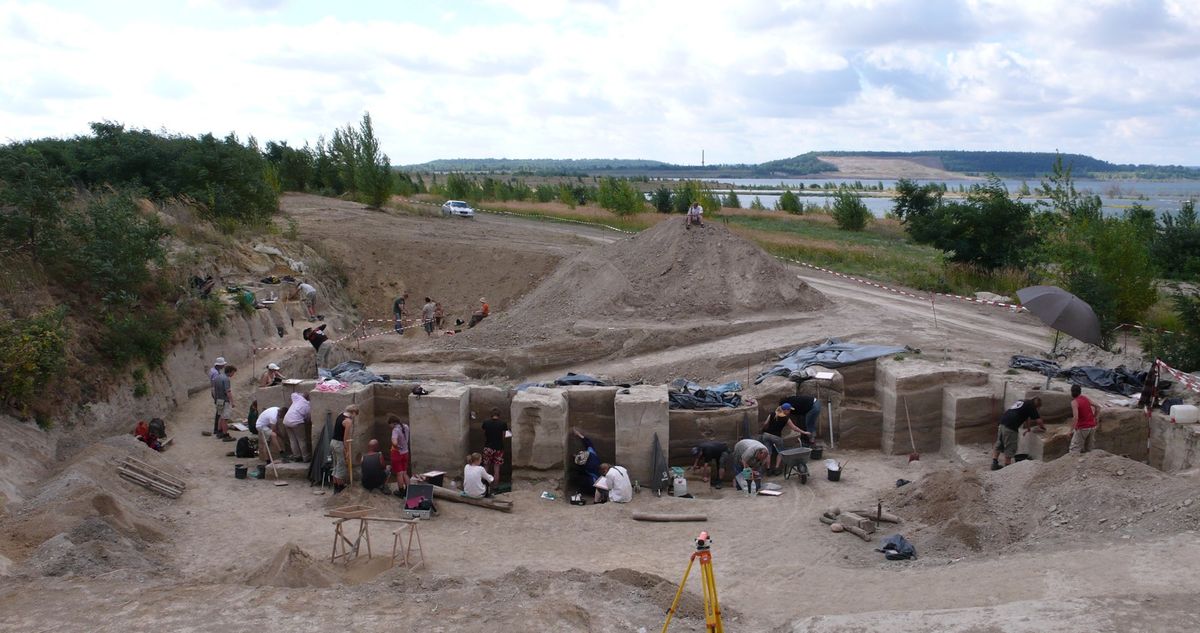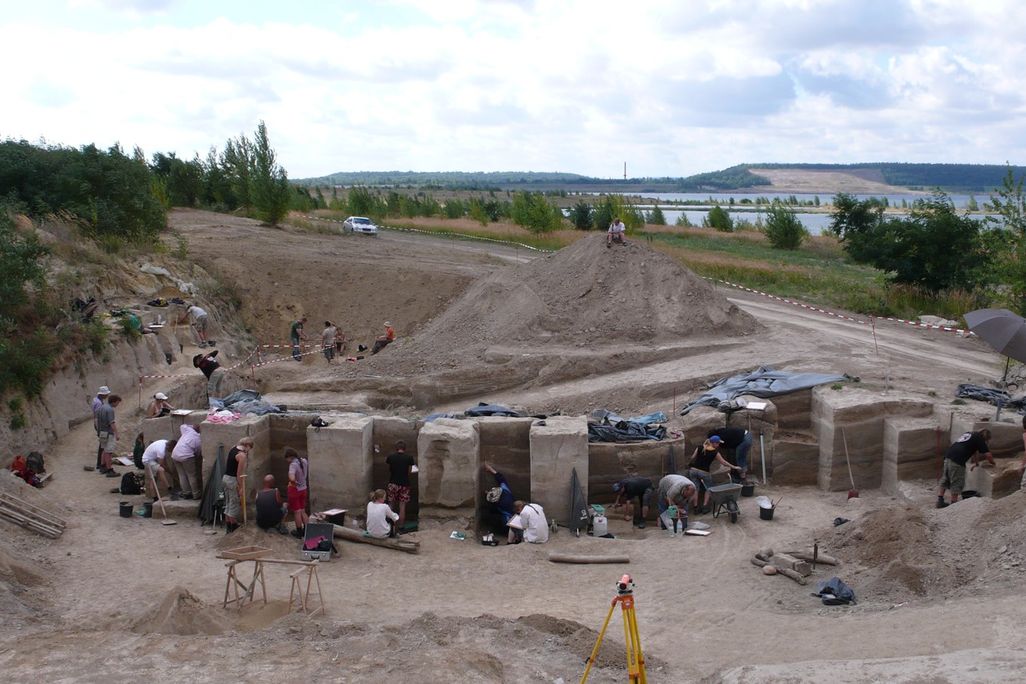
New research suggests that they smashed animal bones into tiny pieces before boiling them to extract the high-calorie grease inside

At the Neumark-Nord site in central Germany, researchers found the remains of at least 172 individual animals, including foxes, horses, big cats and an extinct species of rhinoceros.
Wil Roebroeks / Leiden University
Roughly 125,000 years ago, Neanderthals gathered near a lake to extract the grease contained within animal bones. To do so, they collected the carcasses of dozens of different animals, then smashed and heated their bones to produce a portable, high-calorie food source.
This is the conclusion archaeologists have reached after studying animal remains and other artifacts found in central Germany. Researchers describe this Neanderthal “fat factory” in a new paper published July 2 in the journal Science Advances.
“It’s surprisingly creative and innovative behavior from Neanderthals,” Osbjorn Pearson, an archaeologist at the University of New Mexico who was not involved with the research, tells Live Science’s Perri Thaler.
Quick fact: What happened to the Neanderthals?
After spreading across parts of Europe and Asia, Neanderthals disappeared around 40,000 years ago.
Archaeologists based their findings on more than 100,000 bone fragments found at the Neumark-Nord site. From the remains, they identified at least 172 individual animals, including foxes, horses, big cats and an extinct species of rhinoceros.
The bones showed signs of having been broken into pieces, then heated. These processes would have been time- and labor-intensive, which suggests the reward must have been worth the effort. Archaeologists suspect the carcasses were intentionally processed to extract the marrow and grease trapped inside their bones, which would have provided important nutrients to hunter-gatherers.
Researchers also found anvils, hammerstones, flint tools and traces of fire at the site, reports New Scientist’s James Woodford. In addition, the bones appear to have been broken in places that contain the most fat, per Live Science. These discoveries provide even more evidence in support of the “fat factory” theory.
The bones were smashed into tiny fragments, which would have been a time- and labor-intensive process. Kindler, LEIZA-Monrepos/https://tf-cmsv2-smithsonianmag-media.s3.amazonaws.com/filer_public/d5/42/d5425825-7c13-4bc2-81dd-8e4f75edd698/d390xvar.jpeg)
Since Neanderthals were the only known species of humans in Europe at the time, researchers conclude they were the ones who were responsible for the fat production at the site.
The findings push back the timeline for grease rendering by nearly 100,000 years. Previously, the oldest-known evidence of the practice dated to around 28,000 years ago, more than 10,000 years after Neanderthals went extinct.
They also add to the growing body of evidence that Neanderthals were more sophisticated than previously thought. Other bones found at the site suggest they were hunting and butchering large prehistoric elephants, which would have provided meat for hundreds of people.
“This attitude that Neanderthals were dumb—this is another data point that proves otherwise,” says study co-author Wil Roebroeks, an archaeologist at Leiden University in the Netherlands, to CNN’s Katie Hunt.
How the Neanderthals processed the bones isn’t entirely clear. But researchers suspect they created containers out of birch bark or deer skin and filled them with water and bone fragments. Then, they placed the containers over a fire and let the water boil for several hours. Eventually, the fat trapped inside the bones would have floated to the surface. Once they let the concoction cool, Neanderthals could then skim the bone grease from the top of the water.
“These weren’t simple hunter-gatherers just getting by day to day,” co-author Geoff Smith, a zooarchaeologist at the University of Reading, tells CNN. “They were master planners who could look ahead, organize complex tasks and squeeze every last calorie from their environment.”
Neanderthals may also have intuitively understood that eating bone grease was critical for their survival. This practice likely helped save them from a type of malnutrition called “rabbit starvation,” also known as protein poisoning. The condition, which can be fatal, occurs when humans eat too much protein and not enough carbohydrates or fat.
Especially during times when carbohydrates were scarce or unavailable, like winter and spring, Neanderthals would have needed to consume fat to stay healthy.
“Muscle meat—the stuff that we like to throw on the barbecue—was generally considered by ancient hunter-gatherers to be dog’s food,” Roebroeks tells IFLScience’s Benjamin Taub. “You can only consume 300 grams of protein a day [to avoid protein poisoning] so you need a lot of other carbohydrates or fat to reach your daily energy requirements.”

/https://tf-cmsv2-smithsonianmag-media.s3.amazonaws.com/accounts/headshot/SarahKuta.png)







